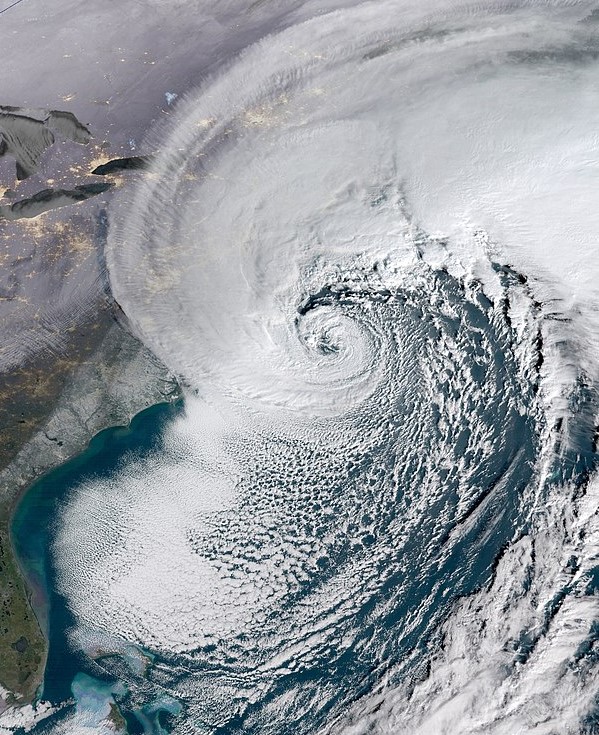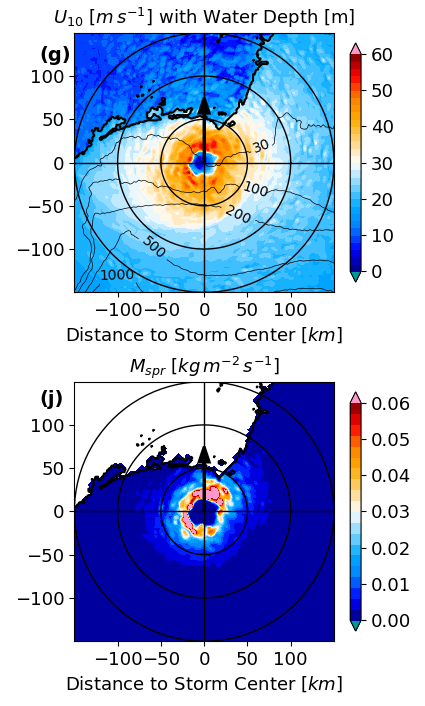Projects
Improving understanding and model coupling for atmosphere-wave-ocean interactions on the US Northeast Coast (2023 - Present)
This work at WHOI is funded by NASA and NSF grants under lead PI Hyodae Seo. The goal of this work is to increase scientific understanding and modeling capability for air-sea-wave interactions off the US Northeast Coast, particularly those relevant to the development of midlatitude "bomb" cyclones that impact the Northeast US and Canada. We are using the coupled atmosphere-wave-ocean SCOAR modeling system as well as abundant in situ measurements in the US East Coast and New England Shelf regions. I am contributing to this work by incorporating the Barr et al. (2023) spray heat flux parameterization into the COARE algorithm, calibrating the updated algorithm using in situ flux measurements, and exercising the model in coupled SCOAR simulations of bomb cyclones. The outcomes of this work will be a new publicly available version of the COARE algorithm that includes spray physics as well as peer-reviewed publications exploring the impact of sea spray heat fluxes on the development of bomb cyclones. This work is ongoing, so look for more information at upcoming conferences! Left: A bomb cyclone off the US East Coast in January 2018 (NOAA).
Seastate-dependent sea spray heat fluxes and impacts on tropical cyclone structure and intensity (2017 - 2023)
This work was performed during my PhD at the University of Washington with advisor Shuyi Chen with support from NASA, NSF, and the Gulf of Mexico Research Initiative. The goal of the work was to develop an improved parameterization for seastate-dependent air-sea heat fluxes with sea spray, implement the parameterization into a fully coupled atmosphere-wave-ocean regional modeling system (the UWIN-CM), and perform numerical experiments to understand the impact of spray heat fluxes on the structure and intensity of tropical cyclones. The new parameterization, developed in collaboration with Chris Fairall at NOAA, was published in Barr et al. (2023). We then exercised the model in UWIN-CM TC simulations to explore how spray evaporation and direct heating of surface air affect TC intensity change as well as boundary layer and TC core structure (manuscript in revision). We also explored the sensitivity of our results to uncertainty in spray generation, motivating further work to constrain the Barr et al. (2023) parameterization using existing observations and to pursue additional observations of spray in high winds. Left: (top) 10-m windspeed U10 with water depth contours and (bottom) spray generated mass flux Mspr for UWIN-CM simulation of Hurricane Michael making landfall in Florida over a shallow continental shelf, which caused greater spray production due to wave shoaling, steepening, and enhanced breaking.

